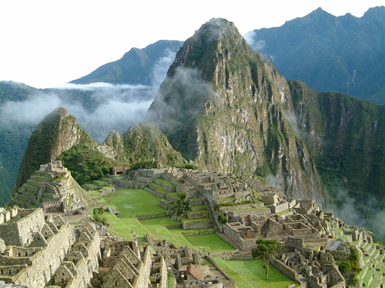InTrans / Apr 03, 2015
Main modes of transportation: DESTINATION PERU
Go! Magazine
 posted on April 3, 2015
posted on April 3, 2015
In the last article of this series, “Modes of travel: DESTINATION SWITZERLAND,” you learned that Switzerland has one of the most dense rail networks in the world, despite its mountainous terrain. In this article, we will explore how the citizens, as well as tourists, travel throughout Peru.
Peru is the fifth most populated country in South America, with over 30.4 million people living within 496,225 square miles. To give you a comparison in size, for those familiar with the western United States, that is about the land size of California, Nevada, Utah, and Arizona combined. However, instead of four states, Peru is divided into 25 regions.

As you can imagine, the geography of Peru makes it difficult for developing contiguous transportation systems. In Peru, one region of the country is defined as highlands (called the “sierra”), one region as the coast (“costa”), and one region as the jungle (“selva”). Nearly 60 percent of the country is defined as being within the jungle region—the Amazon Rainforest.
Roadways
In total, Peru has over 53,375 miles of highway. Approximately half of those miles consist of unpaved roads.
Peru has about 73 personal cars per 1,000 inhabitants. In comparison to the other countries noted in this series, Switzerland has 573 and China has 101. The amount of cars on the road is increasing in Peru. However, within Lima (the largest city in Peru), one concern for those driving into this major city is that the chances of car theft is quite high.
The most popular mode of travel in Peru is by bus. It is the most economical way to travel, with fares of $1.50/hour on coastal highways. At this rate, it would be possible to travel from one end of the country to the other for only $30! Taxis and shared taxis (“colectivos”) are also very popular in Peru. Sometimes, however, they can be considered unsafe in cities like Lima, where competition for riders is very aggressive.
By foot
With attractions like Machu Picchu, which stretches 26 miles along the Inca trail, hiking is one of the best ways to tour this country. Typically, this is a four-day hike, mainly because the altitude change is so drastic. The beginning altitude is 2,750 meters, with the tallest point at 4,200 meters, and then to Machu Picchu which is 2,400 meters. Machu Picchu sees more than 75,000 hikers per year.
Of course, the hike must be done with an organized group that is officially recognized by the country’s tourist agency. Prices for group hikes range from about $750 to $1,000.
Railways
The rail lines in Peru are not contiguous, and often go from the coast to an area more inland. Much of the rail is used to transport freight. Even so, there are just a few hundred miles of railroads in Peru.
However, there are a few rail lines that connect some of the best tourist sites in the country. The southern railway starts at the coast at Arequipa and then takes travelers by Lake Titicaca, Cuzco, Machu Picchu, and the outskirts of the Amazon Rainforest. The Peru Central Railway, which is the country’s most major railroad, is the second tallest railroad line in the world. It climbs to over 15,600 feet (nearly three miles above sea level!). Prices for this scenic and historic 200-mile train ride ranges from around $80-$120 for a round trip.
Airlines
Some destinations in Peru can only be reached by plane. One-way flights are said to be around $90-$220, which can fluctuate according to the season.
It is important to plan ahead and arrive early for your trip because often flights can be cancelled, delayed, or even depart early if weather is a prominent threat. Flight prices also tend to fluctuate, so purchasing in advance is recommended.
Transportation concerns
Lima is currently facing several major transportation challenges. Beginning in the 1990s, there were deregulations that allowed more people to start their own taxi or minicab driving businesses. With the influx of drivers and lack of serious regulation, the result has been dire. The first of these has been the lack of public safety. Lima has seen 1,000 people die each year from car accidents, which is 10 times greater than that of any other developed country. Over half of these fatalities involve pedestrians, who are often killed from crossing the street. Actions are continually being made to audit and better control public transportation operators.
Additionally, there is research being done in an effort to improve air quality issues as a result of increased vehicles, and better allocating financial resources to address urban transportation problems, such as implementing new roads to other nearby cities. For instance, Lima has about 60,000 minibuses—among other cars—in the city that, in most cases, are actually repurposed school buses brought over from the United States. Because they are older buses, they produce more pollution, contributing to the poor air quality in the city.
Related links
http://www.incatrailperu.com/inca_trail_map.html
http://www.peru-explorer.com/by_bus.htm
http://www.lonelyplanet.com/peru/transport/getting-around/local-transport
By Jackie Nester, Go! Staff Writer